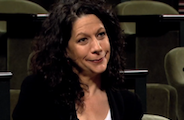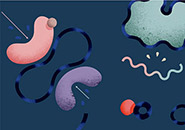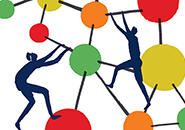Summary
Peter Walter shares prize for discovery of the unfolded protein response of the endoplasmic reticulum.
The Shaw Prize Foundation in Hong Kong announced that Peter Walter, a Howard Hughes Medical Institute investigator at the University of California, San Francisco, has been awarded the Shaw Prize in Life Science & Medicine.
Walter shares the $1 million award with Kazutoshi Mori of Kyoto University. The two were honored for their discovery of the unfolded protein response of the endoplasmic reticulum, a cell signaling pathway that controls organelle homeostasis and quality of protein export in eukaryotic cells.
The Shaw Prize consists of three annual awards in astronomy, life science & medicine, and mathematical sciences. These international awards honor individuals who have achieved distinguished breakthroughs in academic and scientific research. The awards are dedicated to furthering societal progress, enhancing quality of life, and enriching humanity's spiritual civilization. The 2014 prizes will be presented to recipients later this year at a ceremony in Hong Kong.
The Shaw Prizes were established under the auspices of the late Sir Run Run Shaw, a Hong Kong film producer and chairman of Television Broadcasts Limited (TVB), the largest Chinese program producer in the world. The Shaw Prize is accompanied by a medal displaying a portrait of Sir Run Run Shaw and the imprint of a Chinese phrase that translates as “Grasp the law of nature and make use of it.”
Inside the cell, many newly made proteins pass through a maze-like structure of membranes, where they are folded and groomed into their final shapes before being shipped to precise destinations to carry out their functions. This structure, called the endoplasmic reticulum, enforces strict quality control standards to help ensure that defective or misfolded proteins are not allowed to leave. Peter Walter is exploring the signaling pathway by which cells alter their quantities of endoplasmic reticulum. This communication process is so crucial to cells that imbalances can lead to a number of diseases, including cancer, diabetes, cystic fibrosis, and vascular and neurodegenerative diseases.
Growing up in his native Germany, Walter spent hours in his father's West Berlin "chemist shop," a drugstore where medicines and chemicals were mixed and sold. This exposure—along with his own dabbling in the pyrotechnical adventures of mixing chemicals—fostered Walter's early interest in science. By age 12, he knew he wanted to be a chemist. He came to Vanderbilt University as a graduate student, part of a nine-month exchange program in organic chemistry. Walter's main intent was to immerse himself in the English language, a prerequisite he thought necessary to further his research career. He quickly discovered, however, that American universities offered scientists-to-be more hands-on experience and training to eventually work as independent researchers. Walter became hooked on this style of learning and never left.
As a PhD student at the Rockefeller University in the late 1970s, Walter worked with Günter Blobel, an HHMI investigator and winner of the 1999 Nobel Prize in Physiology or Medicine for his discovery of the mechanisms that proteins use to find their correct locations within the cell. Blobel had postulated that newly synthesized proteins contain built-in signals, or address tags, that direct them to their proper destinations, but it remained unclear how the address tags were recognized. That problem was solved when Walter identified the six proteins and the small bit of RNA that make up the signal recognition particle. The identification of this particle was central to Blobel's hypothesis. To this day, Walter continues to study the signals used by proteins to ensure they are shuttled to their proper destinations.
In his laboratory at the University of California, San Francisco, Walter also has turned his attention to deciphering the pathways that cells use to regulate the abundance of their organelles. With a particular focus on the endoplasmic reticulum (ER), he has uncovered a feedback loop within cells called the "unfolded protein response." Working with yeast as a model, his pioneering studies have shown that cells need the right amount of ER to properly fold newly assembled proteins. The same principles also apply in higher organisms, including humans. "Regulating how much ER you have is a fundamental process for cells, and it is a key determinant for any number of diseases," Walter noted. "By understanding the details of this mechanism, we hope to make significant contributions to understanding many medically important pathologies."
If there is too little ER, for example, misfolded proteins accumulate, triggering a signaling pathway between the ER and the nucleus that produces more ER to increase the capacity with which the proteins can be properly folded. If this feedback loop doesn't work and misfolded proteins accumulate inside the ER, the cell will commit suicide. "The cell is programmed so that rather than putting crappy and potentially harmful proteins on the cell surface, it will die," Walter explained. His lab has identified the genes centrally involved in the unfolded protein response and deciphered their function in this cell-internal communication pathway.




